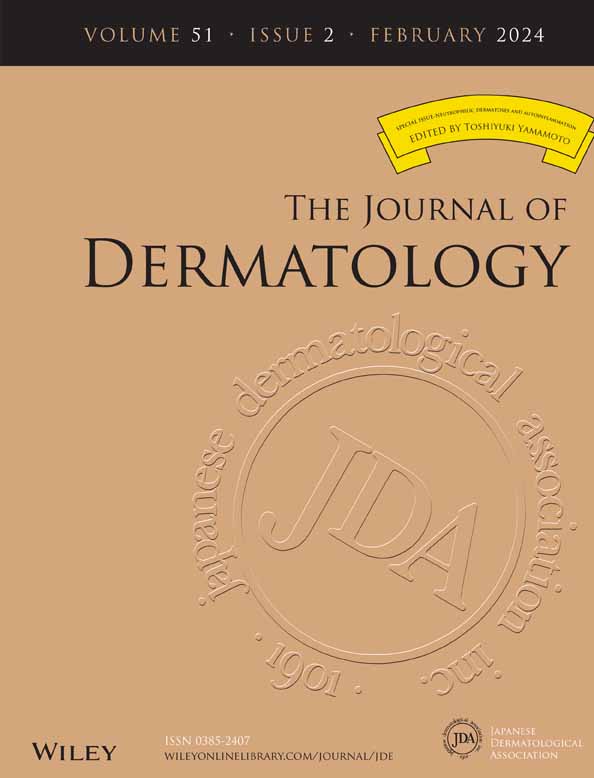Clinicopathologic and trichoscopic features of keratosis follicularis spinulosa decalvans: A case series study
Abstract
Keratosis follicularis spinulosa decalvans (KFSD) is a rare X-linked hereditary disorder characterized by the triad of follicular hyperkeratosis-photophobia-alopecia. The clinical heterogeneity makes the diagnosis difficult. To investigate the clinicopathologic and trichoscopic features of KFSD and to further clarify the essential requisites for the diagnosis, we conducted a retrospective study of patients with KFSD. The clinical information, histologic features, and trichoscopic findings were evaluated. Eight patients were from seven separate families. Two females were mother and daughter from the same family and the other six patients were male and represented sporadic cases. The average age of onset of alopecia was 21.25 years. Involvement of the scalp hairs leading to progressive scarring alopecia on the midline of the scalp with variable degrees of inflammation was the pathognomonic feature. It typically began after puberty. Vellus hair–associated follicular hyperkeratosis affected all of the patients. However, photophobia was not a constant feature. Histopathologic examination revealed disorders of the hair follicle with an acute-chronic inflammatory response. Follicular changes including fused infundibulum, the protrusion of the outer root sheath into the follicular canal, and a dilatation of the follicles at the isthmus level caused by the occlusion of keratin were observed. The trichoscopic features included perifollicular scaling, tufted hairs, and loss of follicular openings. In conclusion, terminal hair involvement, either scalp hairs, eyebrows, or eyelashes, and the hyperkeratosis of the follicle of vellus hairs is the diagnostic basis of KFSD. We hypothesize that follicular changes in histopathology are the primary event that trigger variable inflammation and further follicular destruction.
CONFLICT OF INTEREST STATEMENT
None.




